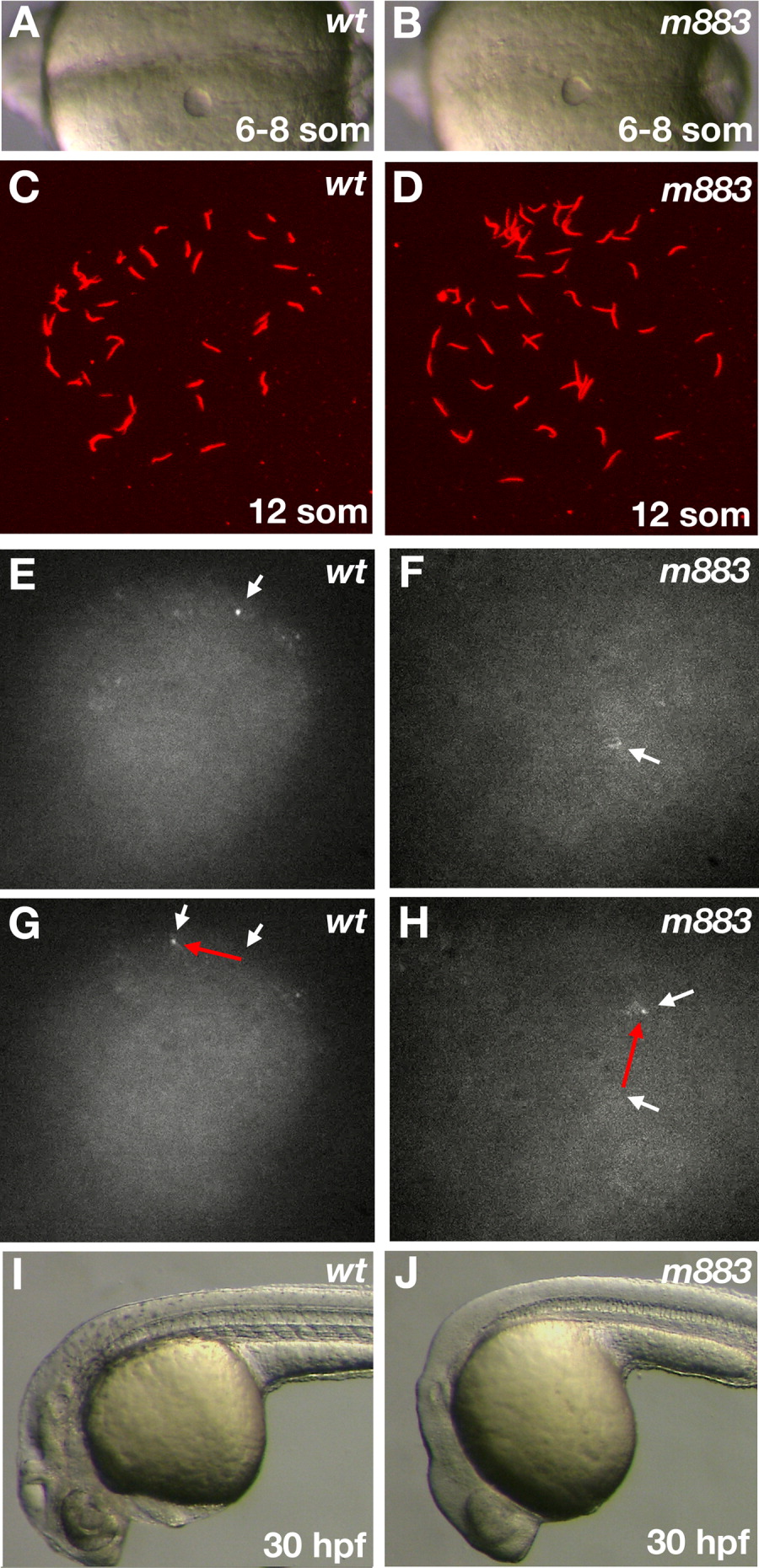Fig. 6 Kupffer's vesicle in atp1a1a.1 mutant embryos resembles that of wild-type embryos in structure and function. A,B: Morphology of the Kupffer's vesicle at 6-8-somite stage reveals no defects in atp1a1a.1 mutant embryos compared to wild-type. C,D: Detection of monocilia in KV by anti-acetylated tubulin immunohistochemistry. The pictures show flat projections of confocal image stacks. Cilia in m883 mutant embryos appear normal. E-H: Life imaging of monocilia induced fluid flow in embryos injected with 100-nm diameter fluorescent beads. White arrows point at the position of fluorescent beads at successive time points. The red arrows indicate the anticlockwise moving beads in a wild-type embryo (E,G), and in a m883 mutant embryo (F,H). These embryos were allowed to develop and the morphological phenotypes documented (I, J). At 30 hpf, the embryo (I) from E,G can be identified as wild-type, while embryo (J) from F,H reveals a mutant phenotype. Wild-type (A,C,E,G,I), and m883 mutant embryos (B,D,F,H,J). Ventral view, anterior to the right (A,B). Lateral view anterior to the left (I,J).
Image
Figure Caption
Acknowledgments
This image is the copyrighted work of the attributed author or publisher, and
ZFIN has permission only to display this image to its users.
Additional permissions should be obtained from the applicable author or publisher of the image.
Full text @ Dev. Dyn.

